How to Reset Windows Store Cache in Windows 10 (Microsoft Store)
The Windows Store app allows you to install and update Universal apps in Windows 10. Thanks to the Store, apps can be installed with one click. By default, Windows Store is set to update apps automatically. It caches some details about installed and available apps to speed up the process of browsing them and improving the responsiveness of the Store app. However, sometimes the Store app fails to update apps or you may also be unable to install new apps. In such a case, you need to reset the Windows Store cache.
If you are having issues with installing or updating Store apps in Windows 10, in most cases it is caused by a corrupted Store cache. To reset it, you need to do the following.
Advertisеment
To Reset Windows Store Cache in Windows 10
- Press Win + R keys together on your keyboard to open the Run dialog.
Tip: See the Shortcuts with Windows (Win) key every Windows 10 user should know - Type the following in the Run box:
wsreset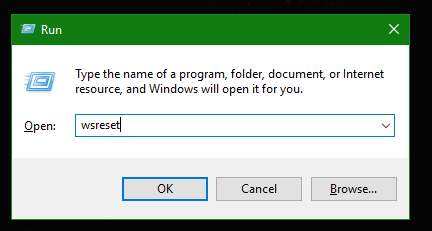
- Press Enter on the keyboard.
The WSreset tool will clean up the Store cache. It may take a few minutes, so be patient. After that, Windows Store will be opened again and you will be able to update or install your apps once again.
Alternatively, you can use the Settings app to reset the Microsoft Store. This will also repair its cache. This option is available starting in Windows 10 version 1903 and later.
Reset the Microsoft Store Cache in Settings
- Open the Settings app.
- Open the Apps > Apps & features page.
- On the right side, find the Microsoft Store app and click on it to select.
- Click on the Advanced options link that appears in the selection.
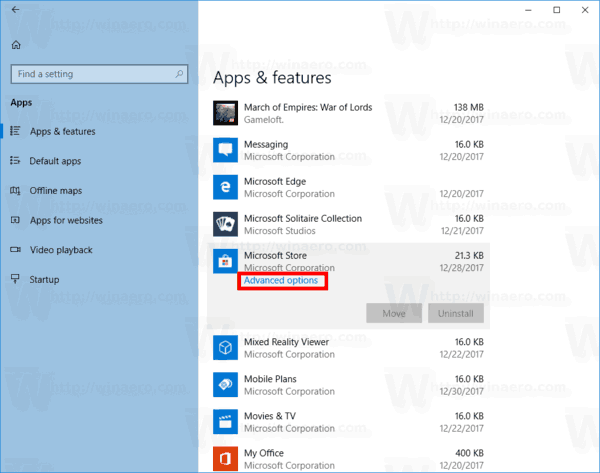
- On the next page, click on the Reset button to reset Microsoft Store and its cache.
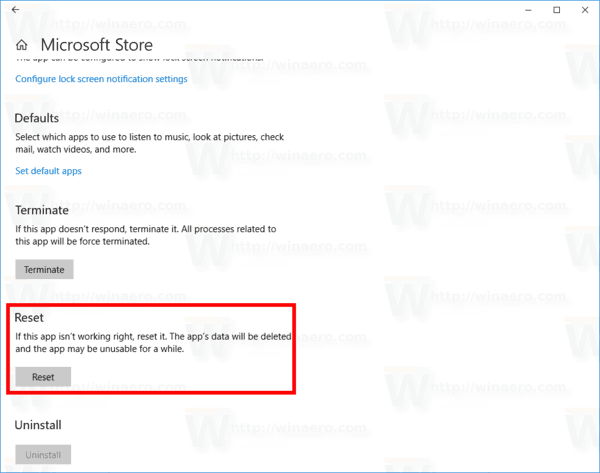
This will reset its cache, and should resolve your issues with apps.
Finally, you can manually reset the Microsoft Store app by removing its cache folder. That folder is hidden, so you need to make the hidden files and folder visible in File Explorer. Follow the steps below.
Reset the Store App Cache Manually
- Open File Explorer.
- Enable the Show hidden files option on the View tab.
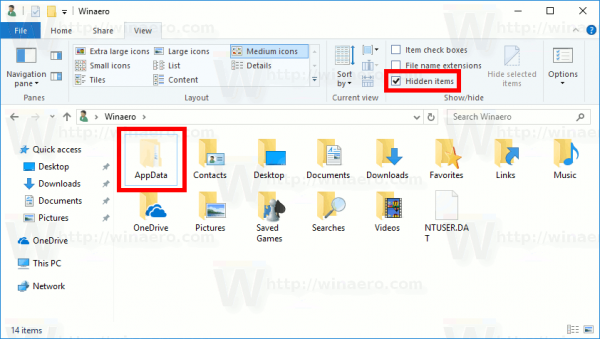
- Now, paste the following into the File Explorer address bar:
%LocalAppData%\Packages\Microsoft.WindowsStore_8wekyb3d8bbwe\LocalState.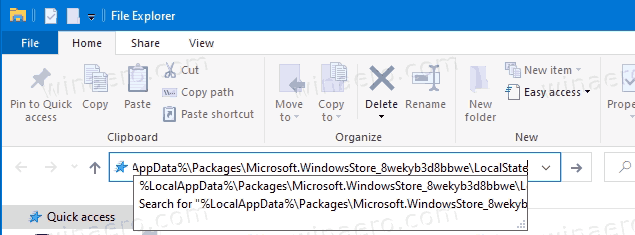
- Here you should see a folder named Cache. Rename it to Cache.bak.
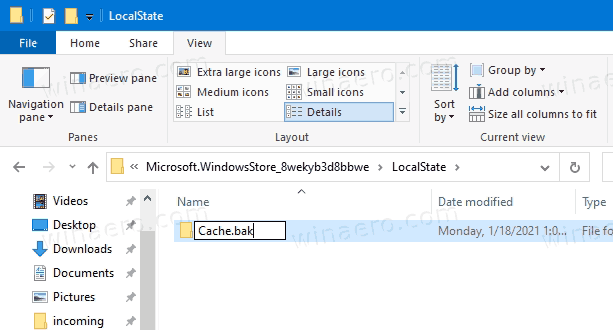
- Now manually create the Cache folder. You now have the Cache and Cache.bak folders.
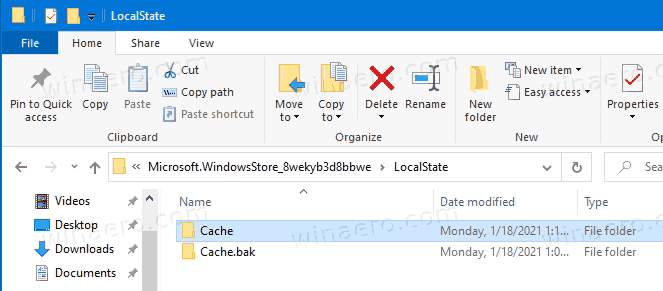
- Restart Windows 10.
The above methods may not rebuild the Store cache for some third party Universal apps. If you reset the Store cache but some of your Universal apps still have issues, you may try to reset their cache manually. Here is how.
Reset Store Cache for Individual Apps
- Open an elevated command prompt.
- Type the following command:
wmic useraccount get name,sid
In the command output, note the SID value related to your user account:
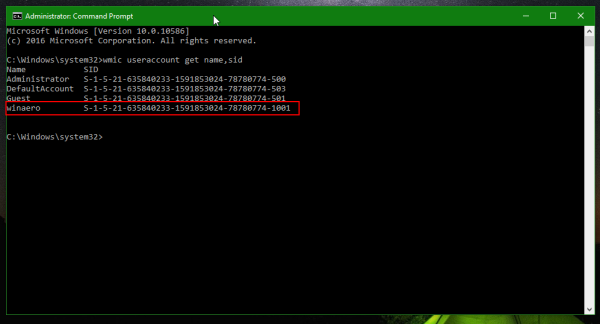
- Open Registry Editor.
- Go to the following Registry path:
HKEY_LOCAL_MACHINE\SOFTWARE\Microsoft\Windows\CurrentVersion\Appx\AppxAllUserStore
Tip: See how to jump to the desired Registry key with one click.
- Delete the subkey which has the SID value in its name:
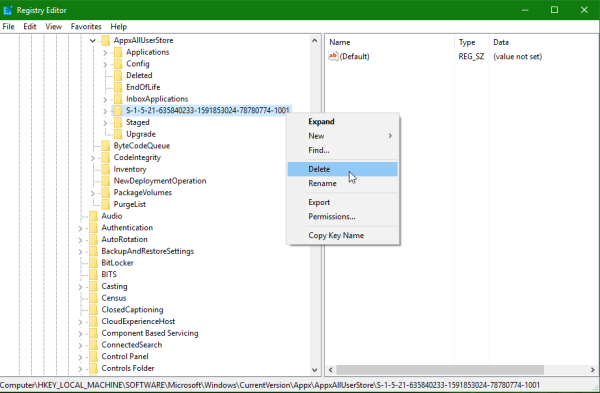
- Restart Windows 10.
That's it.
Support us
Winaero greatly relies on your support. You can help the site keep bringing you interesting and useful content and software by using these options:


Thank you very much.
You are welcome.
Tried this method here, did not work….what a bummer….
Did not work for me either.